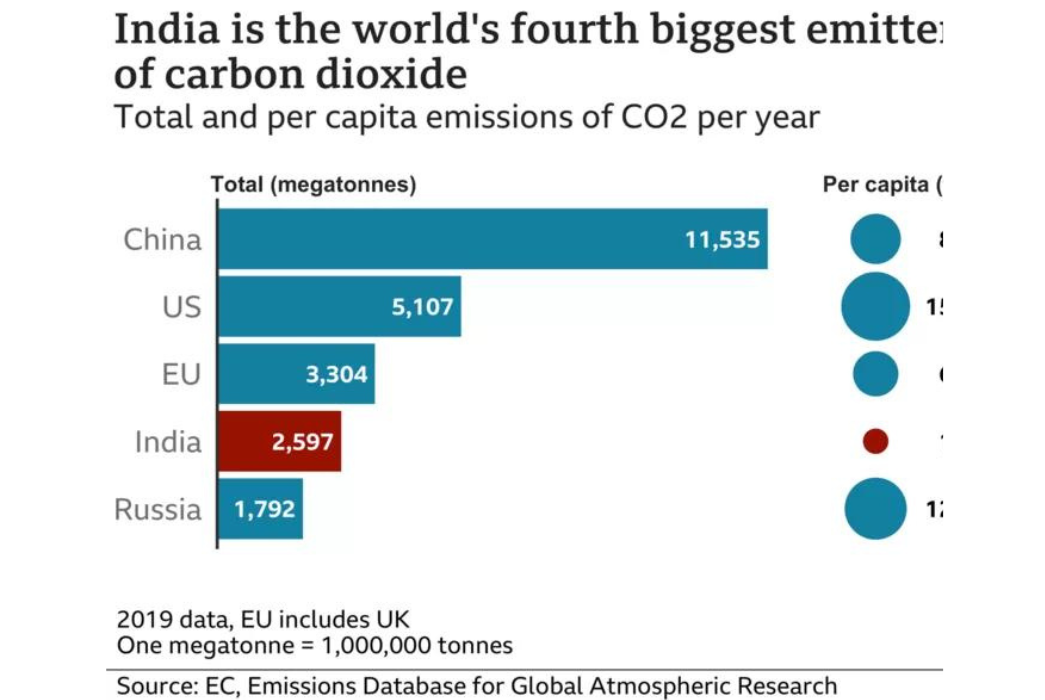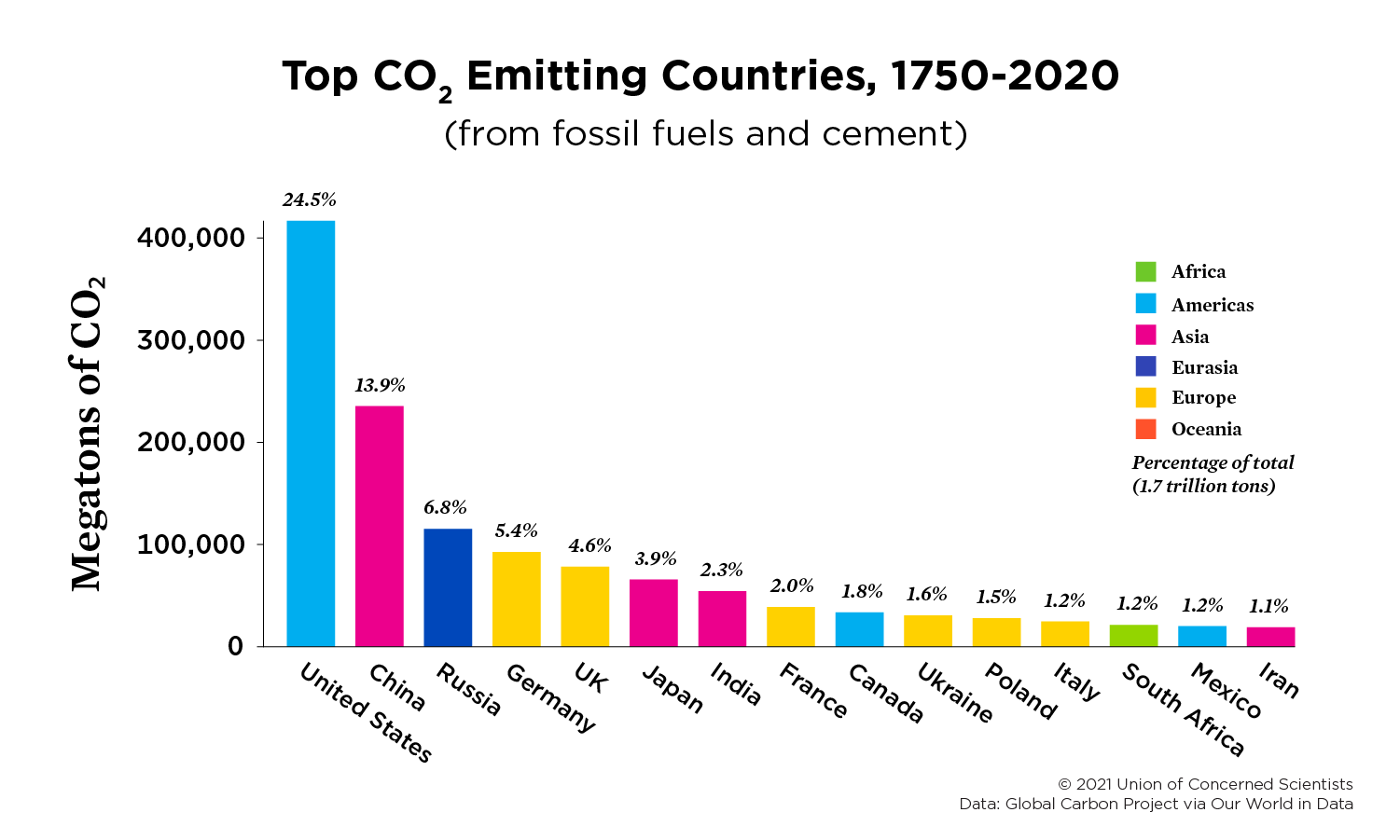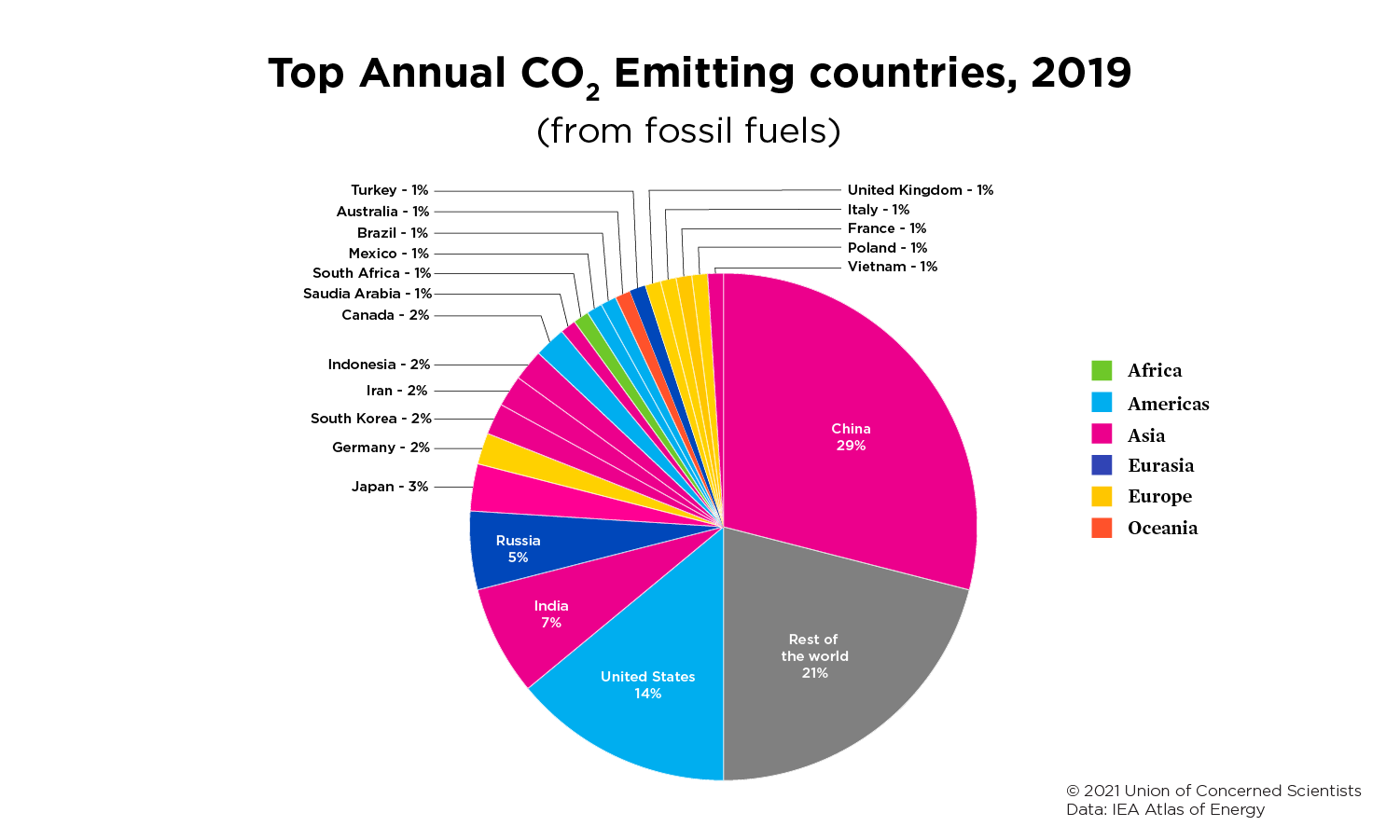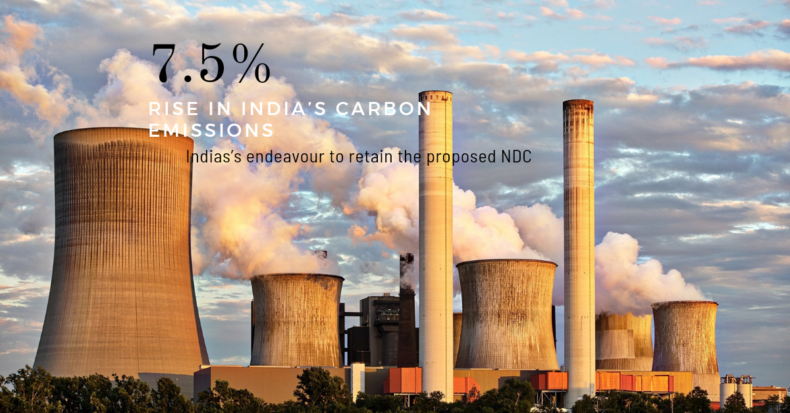A 7.5% increase in India’s carbon emissions was recorded between January and May 2022, a sharp rise from the past year.
Table of Contents
India, in its newly submitted NDC to the UNFCCC, has pledged to become net-zero by 2070 and has now committed to cutting its GDP’s emissions intensity by 45% by 2030.
According to a multi-agency assessment coordinated by the World Meteorological Organization and issued on Tuesday, India was one of the nations that led the global increase in carbon dioxide emissions in the first five months of 2022.
With 2.46 billion metric tonnes of carbon dioxide emitted, or 6.8% of all emissions worldwide, India ranks third on the global list of emitters.

Comparing January to May 2022 to the same time in the previous year, carbon emissions in India climbed by 7.5%, while they increased by 5.7% in the US. The research stated that emissions rose throughout most of Europe.
India’s Nationally Determined Contributions(NDC) – An effort to curb the rising emissions
According to the assessment made public on Tuesday, neither the original nor the additional pledges made by the members of the Group of 20 (G20) to reduce emissions by 2030 are on pace to be fulfilled. The G20 countries produce 70% of the world’s plastic and emit 80% of its carbon dioxide emissions, along with two-thirds of the world’s population and more than half of its impoverished.

Nationally Determined Contributions for the G20 summit’s member nations are almost completed. India has contributed to a rise in carbon dioxide emissions worldwide, with carbon emissions rising by 7.5% in the first few months of 2022 alone.
According to the United Nations Framework Convention on Climate Change(UNFCCC), Nationally determined contributions (NDCs) are crucial to the Paris Agreement and play a great role in the achievement of these long-term goals. NDCs are undertaken by each nation to decrease national emissions and adapt to the effects of climate change.
‘The Paris Agreement (Article 4, paragraph 2) requires each Party to prepare, communicate and maintain successive nationally determined contributions (NDCs) that it intends to achieve. Parties shall pursue domestic mitigation to achieve the objectives of such contributions.’
Each country must outline and communicate its Nationally Determined Contributions, or NDCs, as mandated by the Paris Agreement. India proposed its updated Nationally Determined Contribution on August 3, a year after Prime Minister Narendra Modi made these commitments at the Glasgow United Nations climate negotiations in 2021.
The NDC proposes new targets for reducing greenhouse gas emissions. To further India’s long-term objective of becoming net-zero by 2070, India has now committed to cutting its GDP’s emissions intensity by 45% by 2030.
India previously submitted NDC in 2015, which proposed to reduce the GDP’s emissions intensity by 33 to 35% relative to 2005 levels. There is a 10% boost compared to the previous agreement, but the ground reality is far from promising.
Though these pledged NDCs are overseeing an optimistic start, as per the United in Science report India can reduce its carbon emissions further by 15% than its implied mark.
India’s battle to combat climate change
The annual United in Science report discusses the effects of climate change and how governments are responding to it.
India is already witnessing a climate change catastrophe, which will only worsen as the earth’s surface warms up. The entire nation is grappling with climatic disasters, and historical records are being broken—with erratic rainfall, flash floods, severe weather conditions, and droughts, the effects of climate change in India are more evident than ever.
India’s monsoon rainfall has steadily decreased, and the World Bank predicts that the monsoon would become extremely unpredictable with a 2° C increase in global temperature. As a consequence of the earth’s rising temperature, India observed a 200-day long heatwave, with the temperature reaching 45.03° C and parallel events occurring throughout Asia.
According to the UN, ‘Cities are a key contributor to climate change, as urban activities are major sources of greenhouse gas emissions. Estimates suggest that cities are responsible for 75%of global CO2 emissions, with transport and buildings being among the largest contributors.’
The World Bank’s Environmental Performance Index for 2022 has India at the bottom of the list. The world’s two most polluted cities are New Delhi and Kolkata, with Mumbai ranking 14th on the list.
For the fourth time in a row, according to the statement published by the World Air Quality Report, New Delhi has been rated as the capital with the most polluted air. Moreover, 63 cities in India are on the list of the most polluted places on earth.
Despite expected decreases in emissions due to Covid-19 lockdowns in 2020, the research notes that atmospheric concentrations of greenhouse gases have risen.

Temperatures in India have increased by 0.7° Celsius, between 1901 and 2018, making India the fifth most vulnerable to climate change as per IPCC.
The study also predicts that the annual mean temperature will momentarily be 1.5 degrees Celsius higher than it was in the period between 1850 and 1900 for at least one year in the upcoming five years. Furthermore, there is a 93% possibility that at least one year during the same period will be the warmest on record, according to the analysis.
India’s future and agenda for the long journey ahead
India maintains its top-10 ranking in the CCPI from the previous year. India ranked high in the categories of GHG emissions, energy use, and climate policy, but only middling marks for renewable energy.
India has undertaken more challenging goals for 2030, including the installation of 500 GW of renewable energy capacity, a 45% reduction in the emissions intensity of its economy, and a billion tonnes of CO2 reduction.
India’s efforts to slash earth-warming gases and its aim for net zero emissions by 2070 is a step in the right direction to avert the impending climate destruction.
As the earth’s surface gets warmer and greenhouse gases infiltrate the atmosphere, the devastating effects of climate change are being felt across the globe. An international outreach to designing climate mitigation measures and acting upon them can determine the future if accomplished within the stipulated time.













